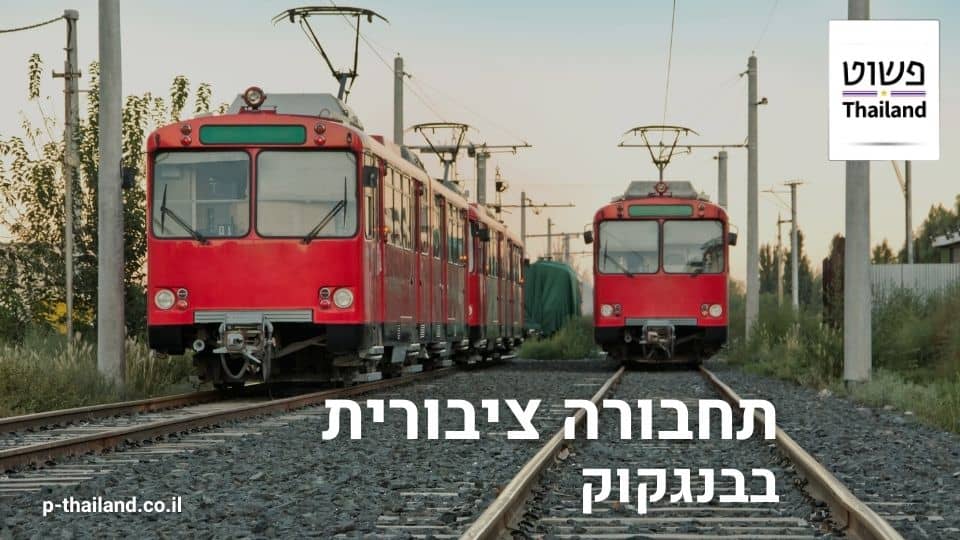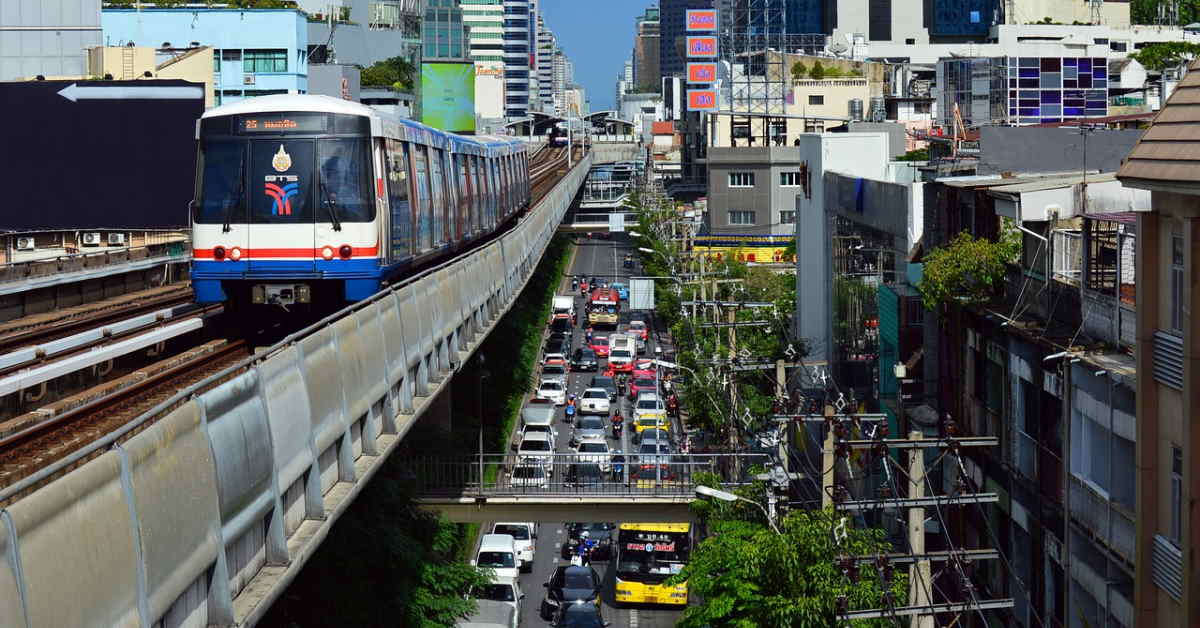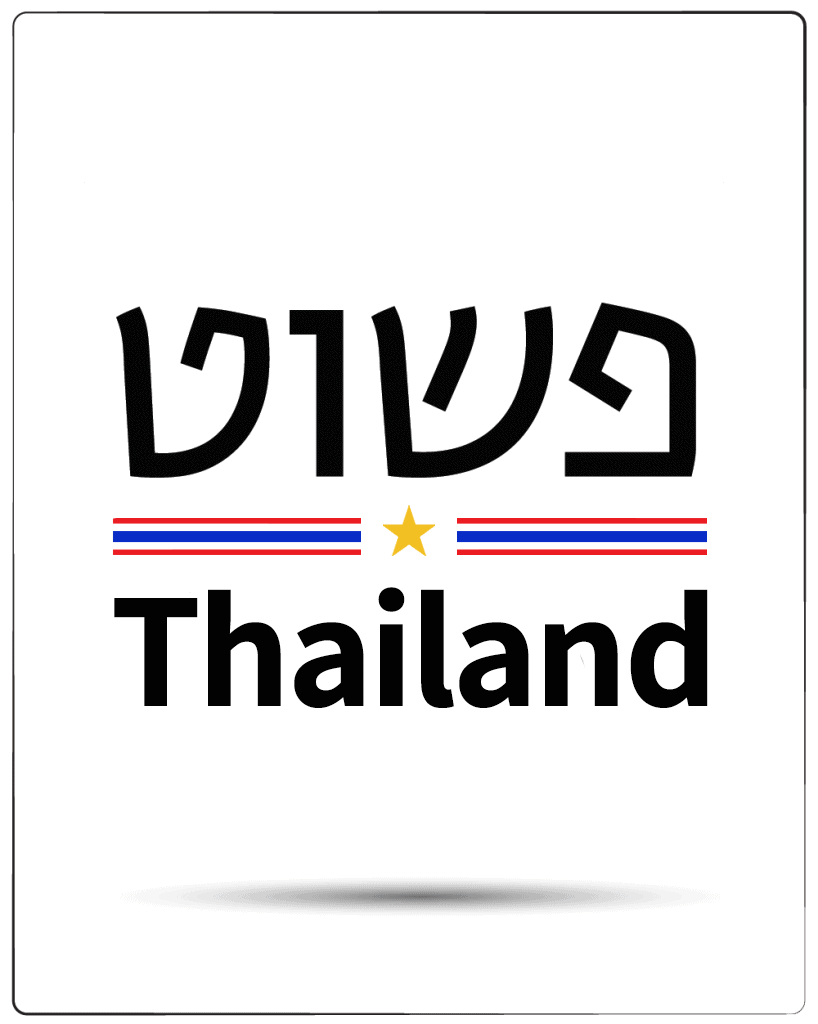Bangkok, the capital of Thailand, is the first meeting point (usually) with this special Asian country. It is a huge city, very crowded with people and cars, a vibrant, frenetic and very colorful city. Many Israelis drive Stop it for 24 hours (or more) On the way to other destinations in Thailand or just before returning home, on a direct flight.
Even though in an initial encounter with the city, the thought of getting around it using one of the transportation solutions offered in it seems like a serious challenge, after experimenting with it a little you realize how simple it is and the task - definitely doable and possible. As befits a large and very touristic city, Bangkok offers a variety of public transportation options, which are available to both the locals of course and those visiting the city for short or long periods of time. The secret is to understand how they work and how to use them properly to get from point to point.
BTS Skytrain
Bangkok's mass rail system, known as the BTS for short, is one of the most popular transportation solutions in the city and also among its most efficient solutions. It is based on two elevated lines, passing through the newer parts of Bangkok and connecting The main attractions of the city, the restaurants, The shopping areas in it, night life and the hospitality, in order to allow all passers-by quick, easy and convenient access. Since it is an elevated train, which passes over the dense and very busy streets of Bangkok, it is possible, thanks to it, to beat the endless traffic congestion and move around the city comfortably and in a pleasant air-conditioned space.
Before getting on the train, you must purchase a ticket from one of the ticket machines, which you will find at every station. In some of these machines you can pay in coins only, and there are machines where payment with bills is possible. It is very important to keep the travel ticket until the end of the trip itself, since in order to leave the station it must be passed through the exit barrier (which will only open when the ticket is transferred).
The train lines operate every day between 05:30 am and midnight and they depart every 5-10 minutes, depending on the station.
The price of a single trip ticket ranges from 16 to 59 baht. A daily travel ticket, valid for 24 hours and allowing unlimited train travel, costs 140 baht.
Those who plan to stay in Bangkok for a long period of time will be able to save money when purchasing a special card for 30 days. A station connecting the airport with the city itself - Phaya Thai Station - is available to those landing at the Bangkok airport who wish to reach the city.

MRT
Bangkok's subway/metro, and in its full name Metropolitan Rapid Transit, operates daily between 6:00 am and midnight and includes two lines: a blue line and a purple line.
The blue line (considered the busier of the two) runs between Tao Poon and Hua Lamphong and connects to Bangkok's main train station, while the purple line runs between Tao Poon and Khlong Bang Phai. Although it is a public transportation solution that mainly serves the locals, it can be great (the blue line in particular) also for tourists visiting the city, and especially for those who want to get to places like Lumphini park, Khlong Toei, Queen Sirikit Convention Center and Thai Cultural Center. There is also a station that connects the airport with the city.
It is important to note: Although there are some points of overlap, shared by the subway and the elevated one, It is not possible to purchase a combined travel ticket, which allows traveling with the two of them. The tickets for the subway can be purchased at the booths located in the various stations, or at the ticket machines. An MRT Plus ticket won't save you money, but it offers a lot of convenience. This is a loaded card, which can be loaded in advance and thus bypass the long queues that sometimes accumulate near the ticket vending machines or counters. The train lines run approximately every 5 to 10 minutes (depending on the station), with the fare ranging from 14 to 70 baht.
Local buses
Many local bus services operate in Bangkok, connecting the different parts of the city. Despite the traffic jams, the circular routes for the most part and also the lack of comfort at times (these are not luxurious buses, most of the times even without air conditioning) are an ideal solution for travelers on a low budget who want to save as much as possible on costs. There is no need to pay for the trip in advance. When the bus arrives, you get inside and pay the ticket clerk who passes between the people and collects the payment as you travel. If there isn't one (this can also happen), the payment will be collected by the driver. It is recommended to pay the exact amount, since in most cases there may not be an excess for the driver or the ticket holder.
In order to take advantage of the service properly, it is very useful to check the bus routes and their operating hours online. Although most drivers speak English, the names of destinations and stations are listed in the local language. It helps a lot, in this way, to identify the place where you want to get off and accordingly call the driver to stop. These buses are active between 5 am and 23 pm, when there is also a special night service.
Small tip: Look for a yellow or blue sign in the bus windows. The yellow marking is for fast buses, which also use the highways, meaning - fewer stops; while the blue marking is for the slower buses with a greater number of stops.

Taxis in Bangkok
One of the prominent means of transportation in the city of Hen Taxis, which come in a variety of colors. Although they are considered the most expensive means of urban transportation and journeys in them can be long and drawn out due to the traffic congestion, sometimes the great convenience and the collection directly from the door, as well as the journey with air conditioning, make them an ideal and correct solution for many.
By law, taxis in Bangkok must use a meter. If the taxi driver refuses to turn it on at the beginning of the trip, do not get in the taxi or stop the trip and get out. The only situation where it is possible to negotiate the price of the trip is if it is a longer trip, between cities, or if you want to rent a taxi for a whole day (or more). Beyond that, it is very useful to get to know the journey and learn the road you are traveling on, as sometimes the local drivers, if only to get a higher amount of money, choose longer routes than necessary, or those that are considered busier. The best way is to use GPS or Waze, and accordingly examine the road.
pay attention: Taxi drivers may sometimes use toll roads. This is necessary in some cases and may make the trip more expensive. Any additional cost of a toll road is charged to the passenger. In some cases the drivers will ask for the payment on the spot and in some cases they will add it to the final rate.
Tuk Tuk
This is the oldest form of transportation in Bangkok and Thailand in general, similar to it can be seen in other Asian countries. It is an experience and an attraction in itself, although it must be taken into account that it is a relatively expensive trip, especially due to the fact that unlike taxis, Tuk Tuk drivers do not operate a meter. Therefore, it is recommended to check the cost in advance and agree on it with the driver to avoid unpleasant surprises later, when you reach your destination. Small tip: If you want to negotiate the price of a tuk tuk ride, choose a driver who sits alone and away from the group. Drivers who are next to other drivers tend to influence each other and lower prices less.
Boating to cross rivers and canals
Various types of ferry and boat services operate along the Chao Phraya River, with some operating along the river and others ferrying people back and forth. These services are color coded and you can get all the information about the stops during the cruise on a special board on the boat. Most ferries operate between 6 am and 22 pm on weekdays, while the orange service also operates on weekends. Tickets can be purchased at any pier.

